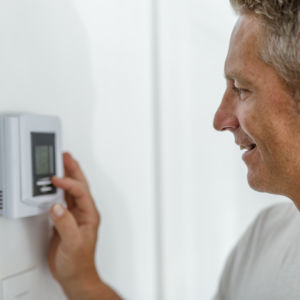It’s the first of the month, which means that many Americans will check the mail to find their monthly electric bill and may find it higher than usual. Unseasonably late winter storms in the upper Midwest mean that many households will see unseasonably high electric bills. Even so, the greatest variations in the total are likely to have as much to do with the effects of state and local policies as the weather. Ironically, many states with low electric rates have some of the highest electricity bills in the country. Although it may look like Republican states pay more because of higher electric bills in the southeast, the answer to the low rate-high bill paradox is a combination of differences in climate and home construction.
According to the U.S. Chamber of Commerce’s Global Energy Institute, electricity rates average 10.54 cents per kilowatt hour nationwide. However, depending on the state, rates can be as low as 7 to 9 cents, as they are for much of the Mountain West, or as as high as 15 cents per kilowatt hour. Last year’s prices were the highest they had been over the past four years, but these increases have largely been driven by increases in high-cost areas, such as California and New England. The cheapest power is found in the southeast, along the Gulf Coast, and in the Mountain West.
Overall, the five states with the highest electricity prices are either constricted by geography (Alaska and Hawaii) or government policies that have restricted access to cheaper generation fuels (Connecticut, Massachusetts, and New Hampshire). Despite the high prices, these are not necessarily the same states paying the highest utility bills.
“When we rank states (and the District of Columbia) by their monthly electricity bills, we get a very different chart. Only two states — Hawaii and Connecticut — are in the top 10 for electricity rate and average monthly bill,” write Nathaniel Bullard and Colleen Regan, energy analysts contributing to Bloomberg News. “Meanwhile, Alabama is in the bottom half for retail power rates but its residents pay the most, and consumers in Texas — with a ‘low’ price of only 11 cents per kilowatt-hour — have the seventh-highest bills.”
According to their analysis, customers in the Northeast, despite having some of the highest utility rates, actually have lower monthly bills and pay a smaller percentage of their income for utilities than do residents of places like Alabama and Texas.
Oddly enough, Bullard and Regan view the issue through a political rather than economic lens.
“Grouping all of these measures together, we find only one correlation in the top states for electricity expenditures as a percentage of personal consumption: voting habits,” they write. “Nineteen of the top 20 states for electricity spending as a percentage of personal consumption voted Republican; 25 of the top 30 voted Republican.”
The statistic they cite is an unusual one, since it indirectly includes median income information as well as average electricity prices and usage. All of these vary dramatically across the country.
While energy costs in New York may be higher, so are median incomes. Even though the average New Yorker will pay a higher utility rate than the average Alabaman, median household income ($62,909 in 2016) in the state is also about $17,000 higher than in Alabama ($46,257 in 2016). As a result, the portion of total earnings spent on utilities is lower in coastal regions where energy prices are comparatively higher.
The trouble is, this statistic involves weather as much as it does with politics, since many of these states also have low electricity rates.
Digging deeper shows that bills have as much to do with how homes are constructed as they do with utility rates. In Alabama, for instance, hot humid summers mean that many residents run their air conditioners heavily, while also relying on electric heat pumps to heat their homes in the winter. According to the U.S. Energy Information Administration, three out of five houses in Alabama rely on electric heat. Compare this to Oklahoma, which ranks 25th in the nation for average monthly electric bill, and where about half of households use natural gas for heating.
Federal statistics show that heavy power use for cooling drives power bills up across much of the Southeast. South Carolina, which has the second-highest monthly bills, shares much of Alabama’s climate. At the same time, high electric bills also show how natural gas connectivity has reduced the reliance on electricity for heating.
“There are a number of factors that relate to [why electricity prices are different in different states], but a large part is the resources produced in the state, and policy and taxes,” writes Marco Castaldi, professor of chemical engineering at the City University of New York. “For example, energy in the Midwest… is cheaper because they have significant fossil fuel resources and exploit them. In New York there is a large amount of hydro and nuclear energy, but the energy costs are high due to taxes.”
When it comes to electricity, the correlation between rates and monthly electricity bills is more than a question of blue and red.

